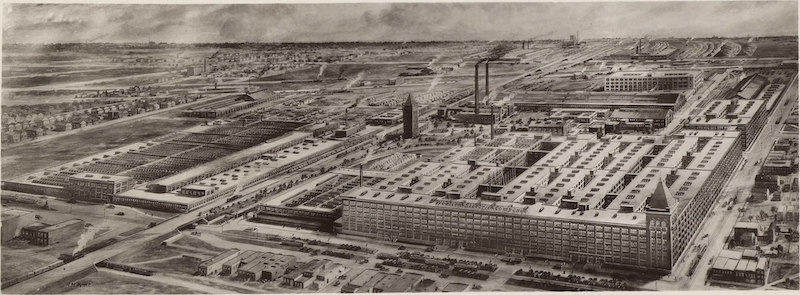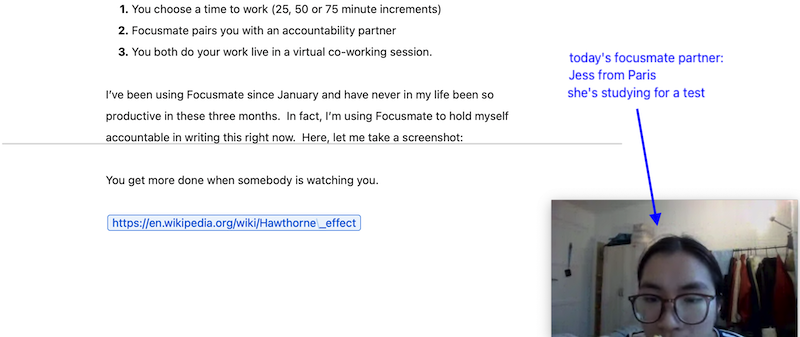Sponsored by Morning Brew

Please support our sponsor (cause their newsletter is awesome)
Get smarter in 5 minutes with Morning Brew (it’s free)
4+ million people start their day with Morning Brew. It makes business news fun and is one of the best newsletters out there. I read it every day. You should too.
Please support Morning Brew by clicking the link and subscribing
In this age of dark-mode computer screens and auto-dimmed lighting to maximize productivity, one could say that Hawthorne Works was well ahead of its time. One would be wrong in saying that, but one is welcome to say it anyway if one really wants to.
Hawthorne Works was an electrical plant located outside of Chicago. Interested in increasing employee output, they conducted a series of studies between 1924 and 1933 in which they explored the effect of lighting on worker productivity.
Over the years of the study, they actually found that there was a noticeable increase in productivity whenever there was a change in lighting. Any change – lighter or darker – caused an increase in productivity during the study.
When the study ended, productivity again declined.
Interesting, right?I thought so too.
Unfortunately, the study was completely wrong.
The Landsberger Finding
Henry Landsberger was part of the Kindertransport – the initiative that evacuated 10,000 Jewish children from Germany just before the start of World War II. He was sent to the UK and adopted by an English family. Years later, he moved to the United States to attend Cornell University, and eventually became a sociologist, living the rest of his life in the US.
I tell you his background, not because it has any relevance to the point of my story (it doesn’t) but because I think it’s important to know how meaningful it was to save 10,000 Jewish kids from otherwise abbreviated lives.
Anyway, fast forward to the mid-1950s and Henry Landsberger found himself reviewing the data from the Hawthorne experiments. Why he was looking at that data 15 years after the study had concluded is beyond my level of understanding. But I’m glad he did because he had an a-ha moment that, nearly 70 years later, would lead to a dramatic improvement in the productivity of millions of people. Including me and, probably, you.

The Hawthorne Effect
Henry Landsberger realized that the increased productivity amongst the workers during the Hawthorne studies actually had nothing to do with the change in lighting. Instead, Landsberger discovered that productivity increased because the workers were trying to impress the researchers.
When the researchers left, productivity declined again.
And this is how, in 1955, a former child refugee discovered that people are more productive when they believe they are being watched.
He coined this phenomenon “The Hawthorne Effect,” after the organization that completely bungled its experiments.
This insight is more relevant now than it has ever been.
Sitting In The Bullpen
It was probably Andy Grove, the CEO of Intel, who began the trend of top executives moving out of corner offices and into cubicles in the bullpen. He ran a multibillion-dollar corporation out of a cubicle alongside his other employees.
The unsaid message that is delivered when leadership sits with the team is that no single person is more important than any other.
That’s a great message from leadership and one I fully support.
But let’s not fool ourselves. Wherever the leader sits, everybody still knows that person is the leader. And that’s where the Hawthorne Effect comes into play.
If leadership is sitting amongst the subordinates, employees will naturally think their leadership is watching them work. Consequently, as Henry Landsberger found out, employees will tend to be more productive when their boss is alongside them.
New York City Mayor Michael Bloomberg understood this and he sat in the bullpen with the rest of his staff. So did Meg Whitman, while she was CEO of eBay.
So did thousands of other CEOs of thousands of other companies.
Why? Because it works.
And speaking of work…

Remote Productivity
It’s very hard for a company leader to sit in an office bullpen when there isn’t a bullpen anymore. Or an office.
Before COVID, the Hawthorne Effect led to increased productivity for many companies. Now, however, the shift to a remote workforce somewhat destroys that benefit. It also leaves many leaders fearful that their employees won’t be working as hard without them there to intimidate work alongside the team.
After all, we need to remember that the average person is only productive for 2 hours and 53 minutes per day.
Accountability and productivity couldn’t be more important than in a distributed workforce. Naturally, with the remoteness of our work, we are experiencing the emergence of more resources claiming to boost accountability and productivity.
In fact, accountability and productivity apps are more popular today than ever before.
There are goal-driven accountability apps like GoalsWon, Loop, and UltiSelf.
There are time management productivity apps like Pomodoro, Toggl, and Forest
There are personal well-being apps like Insight Timer, MyFitness Pal, and Bloom.
But as good as all of these may be, they are all missing one critical ingredient: the Hawthorne Effect.

Focusmate
In 2017, this dude Taylor Jacobson started a company called Focusmate. The concept is simple:
- You choose a time to work (25, 50 or 75-minute sessions)
- Focusmate pairs you with an accountability partner
- You both do your work live in a virtual co-working session
Taylor clearly understood the basic premise handed down by Henry Landsberger:
People will be more productive when they feel they are being watched.
I’ve been using Focusmate multiple times per day since January 2023 and have never in my life been as productive as this year so far. In fact, I’m using Focusmate right now to hold myself accountable in writing this article. Here, let me take a screenshot:

I’m not saying this to pitch Focusmate in any way. Heck, I don’t care if you use it or not. What I do care about is that you pay attention to not just WHEN you are most productive, but WHY.
Because imagine your feeling at the end of every day if you achieved your goals faster. If your 2 hours and 53 minutes of productivity actually turned into 5 hours.
Imagine how happy you’d be to live your dreams.
That, my friends, is the impact Henry Landsberger had on the world. Not bad for a kid who was pretty damn close to having all his dreams destroyed.
Somewhat Relevant Quote
“Productivity is less about what you do with your time, and more about how you run your mind.“
Robin Sharma, Leadership Author, Storyteller
Random News
MasterFin – Finland is giving a Master Class on happy and I really really want to go
Bat S**t Crazy – There are bats the size of people and now I’m afraid of the dark
Gone Girl – There’s a guy who helps abused women disappear and I think he’s a hero
Wiggin’ Out – Of course it was Australia that created the largest wig ever
